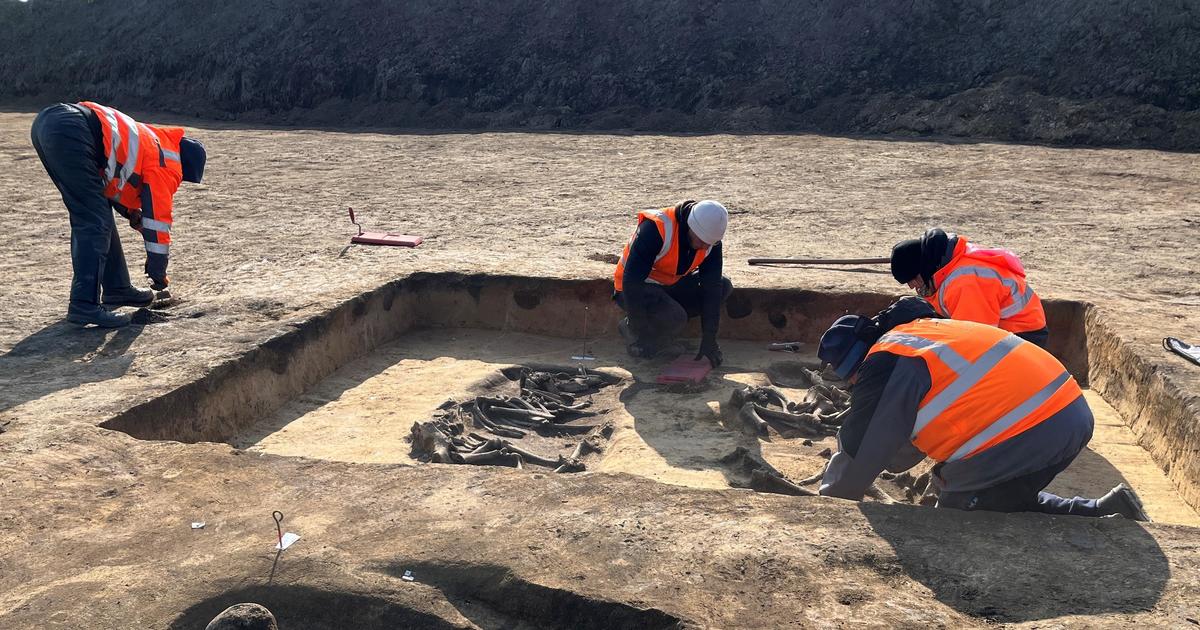German archaeologists discovered a complex ancient burial ground, including a chariot grave, while excavating an industrial park where construction is set to begin on a new facility for Intel, the American chip manufacturing company.
The site is near Magdeburg, about 100 miles west of Berlin, and plans to build two semiconductor plants on the land is meant to begin later this year. Archaeologists from the State Office for Heritage Management and Archaeology Saxony-Anhalt have been examining the area in the Eulenberg municipality since 2023, and, ahead of the construction project’s start date, realized that a small hill in the industrial park actually contained burial mounds dating back to the Neolithic period.
Beneath the hill were were two “monumental mounds” covering wooden grave chambers with multiple burials inside, the state heritage office said in a news release issued Friday. The burial sites are believed to be around 6,000 years old and included remnants of ancient rituals like a chariot grave, where cattle were sacrificed and buried with a human body in a particular formation to mimic a cart with a driver or a plow pulled by the animals.
Oliver Dietrich / State Office for Heritage Management and Archeology Saxony-Anhalt
The office called these new findings “spectacular” and said they suggest that the “landscape obviously remained important for prehistoric people over a long period of time.”
Archaeologists have traced one of the two burial mounds to the Baalberg group, an ancient Neolithic culture that existed in central Germany between about 4100 an 3600 B.C.E. Two large, trapezoidal burial chambers were built from wood inside the mound, with a corridor running between the chambers that experts suspect was used as a procession route by settlers in the next millennium.
Along the procession route, archaeologists found the remains of pairs of young cattle that were sacrificed and buried. In one instance, a grave was dug for a man, between 35 and 40 years old, in front of the cattle burials to create the “chariot” image. Ritualistic graves of this kind “symbolize that with the cattle the most important possession, the security of one’s own livelihood, was offered to the gods,” the heritage office said in their news release.
Oliver Dietrich / State Office for Heritage Management and Archeology Saxony-Anhalt
Archaeologists also discovered a ditch along the procession route and more burial mounds in the area that date back about 4,000 years.
“The consistency in the ritual use of this part of the Eulenberg is astonishing, and the subsequent analysis of the finds promises even more interesting insights,” the heritage office said.
Excavations of the Eulenberg and the surrounding industrial park are set to continue through April.

